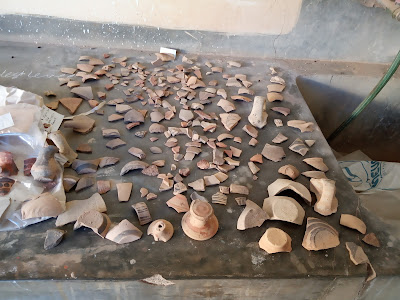On Wednesday 29 March the Institute will host its ninth event of the 2022-2023 academic year. This will be an in-person lecture in the auditorium of the Institute’s premises at Orminiou 3A, Ilisia. [Metro: Megaro Mousikis or Evangelismos.]
Starting at 19.00, Charles Sturge (Ph.D. Candidate, Department of Classics, University of Cincinnati) will deliver a paper entitled, “Metrical Structures in Prehistoric Cretan Tablewares: A Case Study from Knossos”.
“Prehistoric Cretan (“Minoan”) tableware has been studied for over a century, predominantly with regard to the establishment of relative chronology, typology and interconnectivity. Less attention has been paid to understanding functionality and behavioural implications of these pots, in part because of the difficulty of directly establishing ceramic function.
This paper proposes, through a synthesis of published data, that despite problems with the quality of data, it is possible to indirectly approach these questions through a close study of the inherent affordances of the individual vessels, which are reflective of consumer choice and demand, and thus underlying behaviours and etiquettes.”
“Using the late Neopalatial period at Knossos (LM IA – B) as an example, this paper offers a case study of this approach, blending qualitative, metrical and volumetric criteria to explore the range of ceramic tableware produced and consumed during this period at Knossos. Heuristically organising the material into ware groups (decorated, monochrome and plain) several suggestions will be made by exploring relationships within and between these groups diachronically.”
“First: Neopalatial plain and decorated pottery are sufficiently different in typological range and size as to suggest different consumption modes for their use, contrary to the typically held view that these represent cheap/expensive variants. Second, Prehistoric Cretan pottery has, to some extent, a hierarchical structure in relation to size and volume in the Neopalatial period that is too systematic to be not deliberate. Finally, qualitative evaluation of the differences between LM IA and LM IB, suggest that aspects of the social change that culminated in the transformation of Cretan dining habits by LM II are already visible in LM IB with an increased individualism, alongside hints at experiments with forms that would become popular in the following period. In sum, these points aim to shed light the ‘hidden processes’ of archaeology demonstrating that even if precise aspects remain murky, we can draw into the light broad contours of the demands of Prehistoric Cretan consumers.”
We look forward to welcoming you to the Institute for what promises to be a very informative presentation.
Jonathan Tomlinson
Assistant Director





No comments:
Post a Comment